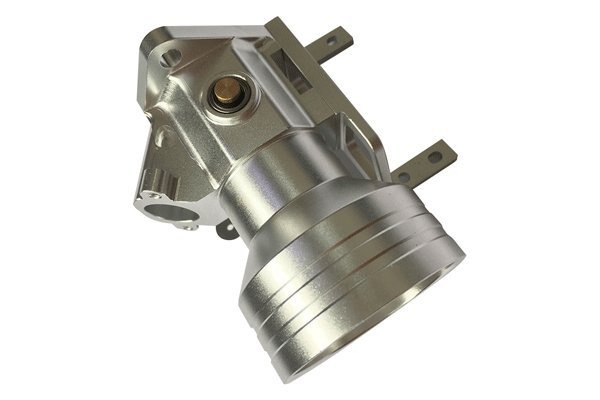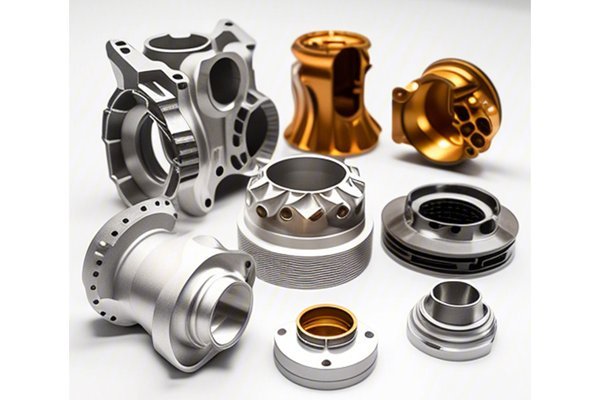Did you know that over 40% of all medical devices fail during the early stages of development? One of the critical reasons for this high failure rate lies within the materials selected for manufacturing these devices. The importance of choosing the right material for CNC machining in medical devices cannot be overstated. A well-considered material selection can mean the difference between innovative success and catastrophic failure, especially in an industry where safety and precision are paramount.
In this extensive blog, we will explore the significance of material selection for CNC machining in medical devices, discussing the factors affecting this decision, common materials used, their properties, benefits, and drawbacks, and how to optimize the machining process with the right material.
Understanding CNC Machining in Medical Devices
Computer Numerical Control (CNC) machining is a subtractive manufacturing process that uses programmed computer software to control machines and tools. This technology has gained significant traction in the production of medical devices due to its capability to produce highly precise components that can be tailored to meet stringent regulatory standards.
However, no amount of precision will compensate for the use of the wrong material. The material selected impacts not only the mechanical and chemical properties of the device but also its biocompatibility, durability, and overall performance.
Criteria for Material Selection
To effectively choose the right material for CNC machining in medical devices, one must consider several critical factors:
Commonly Used Materials for CNC Machining in Medical Devices
Here is a rundown of the most commonly used materials in CNC machining for medical applications and their properties:
Properties: Stainless steel is known for its high strength, corrosion resistance, and ease of sterilization.
Uses: It is widely used for surgical instruments, implants, and devices that require durability and hygiene.
Pros: Exceptional tensile strength and widely available.
Cons: Can be heavier than other materials, which may not be ideal for lightweight applications.
Properties: Titanium offers superior strength-to-weight ratios and exceptional biocompatibility.
Uses: Primarily used in implants and prosthetics due to its ability to osseointegrate with bones.
Pros: Highly resistant to corrosion and very lightweight.
Cons: More expensive than stainless steel and harder to machine.
Properties: Biocompatible plastics such as PEEK (Polyether Ether Ketone) and PEI (Polyether Imide) are favored for their lightweight and chemical resistance properties.
Uses: Often found in drug delivery systems, surgical tools, and implants.

Pros: Lower density and the potential for easier machining compared to metals.
Cons: Can be less durable under mechanical stress than metals and may require specific machining techniques.
Properties: Ceramics are known for their hardness and biocompatibility.
Uses: Common in dental applications, joint replacements, and components requiring wear resistance.
Pros: Excellent wear resistance and biocompatible.
Cons: Brittleness can be a concern; they are harder to machine.
The Impact of Material Selection on Product Quality
The selected material affects the overall quality of the medical device, influencing factors such as:
Optimizing CNC Machining with the Right Material
To optimize the machining process in CNC, the following practices should be adopted:
Case Studies: Successful Material Selection
Case Study 1: A Surgical Device Manufacturer
A manufacturer of surgical implements was struggling with the corrosion of their stainless steel products. After thorough analysis and consultation, they switched to using titanium for its corrosion resistance and overall strength. The result was a substantial increase in product lifespan and reduced warranty returns.
Case Study 2: Custom Prosthetic Solutions
Another company specializing in custom prosthetics transitioned to using PEEK. This plastic provided the necessary flexibility and strength, enhancing patient comfort while maintaining compliance with biocompatibility standards. The switch resulted in improved patient outcomes and satisfaction.
The proper selection of materials for CNC machining in the medical industry is vital not just for the success of the product but also for the safety and well-being of patients. Choosing materials that align with the mechanical, chemical, and biocompatibility criteria is essential to ensuring long-term performance and conformity to regulatory standards.
As we have explored in this blog, understanding the nuances of material properties, making informed decisions based on comprehensive criteria, and optimizing the CNC machining process are necessary steps in producing high-quality medical devices.
In a landscape where innovation is constant and the stakes are high, it is crucial for manufacturers to think critically about their material choices. The differences can be profound; hence, taking the time to evaluate and understand this aspect can lead to producing safer and more efficient medical devices, ultimately impacting countless lives positively. So, as you embark on your next CNC project in the medical sector, remember that the choices you make today in material selection will ripple through your entire production process—take them seriously!






